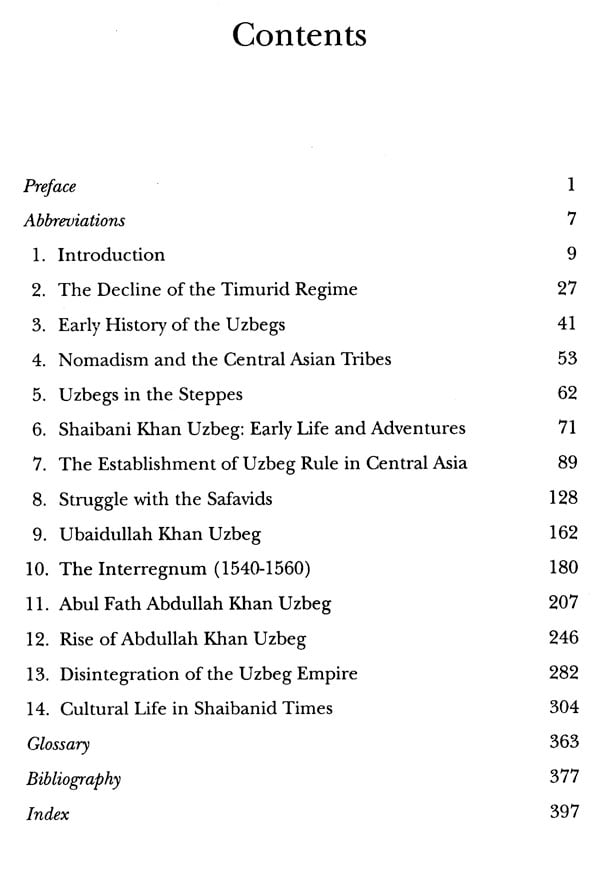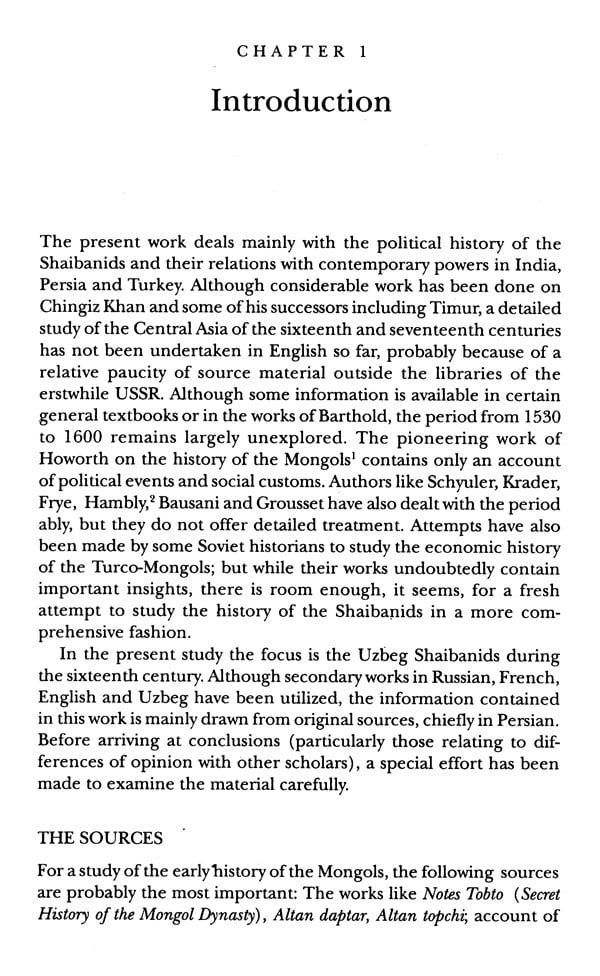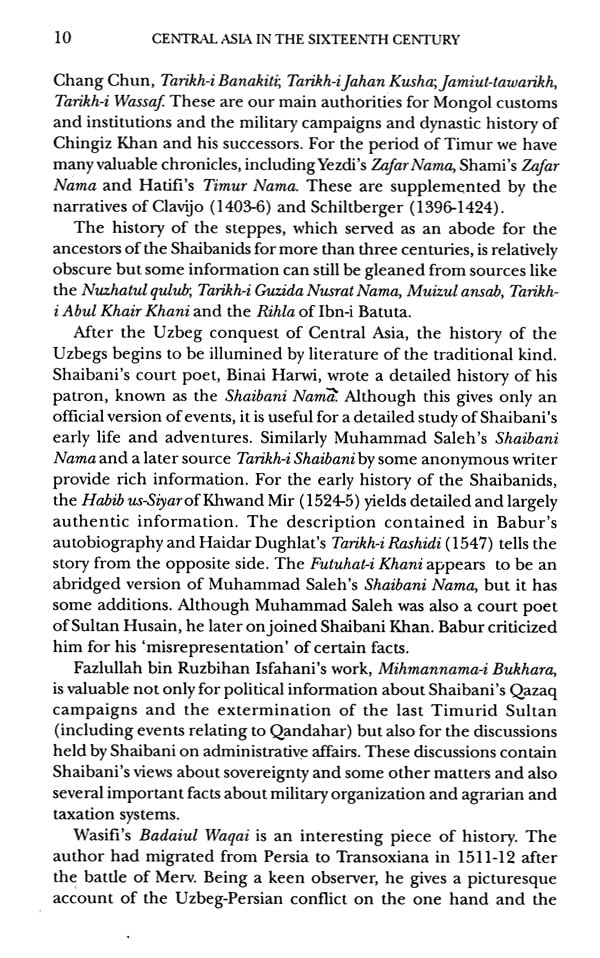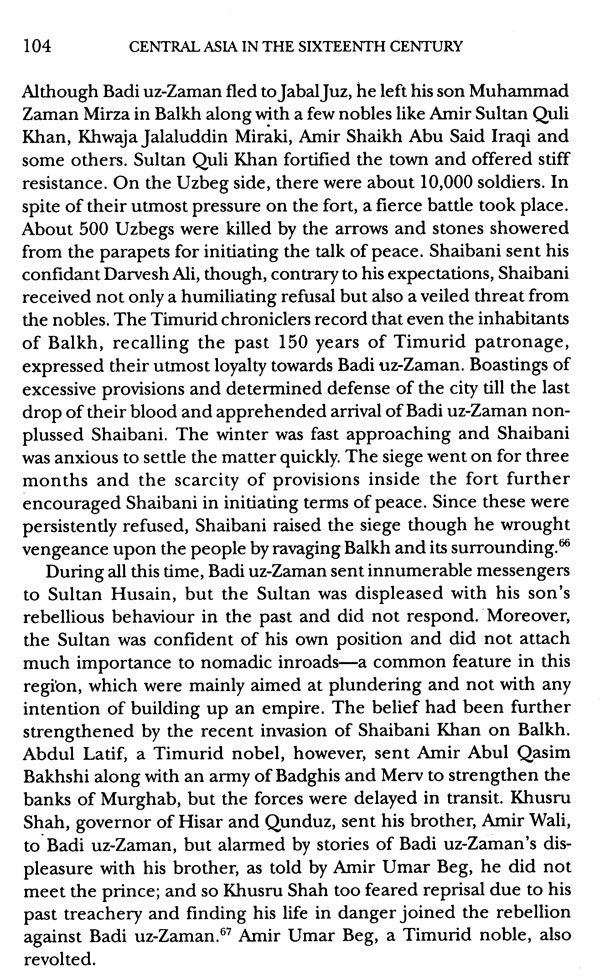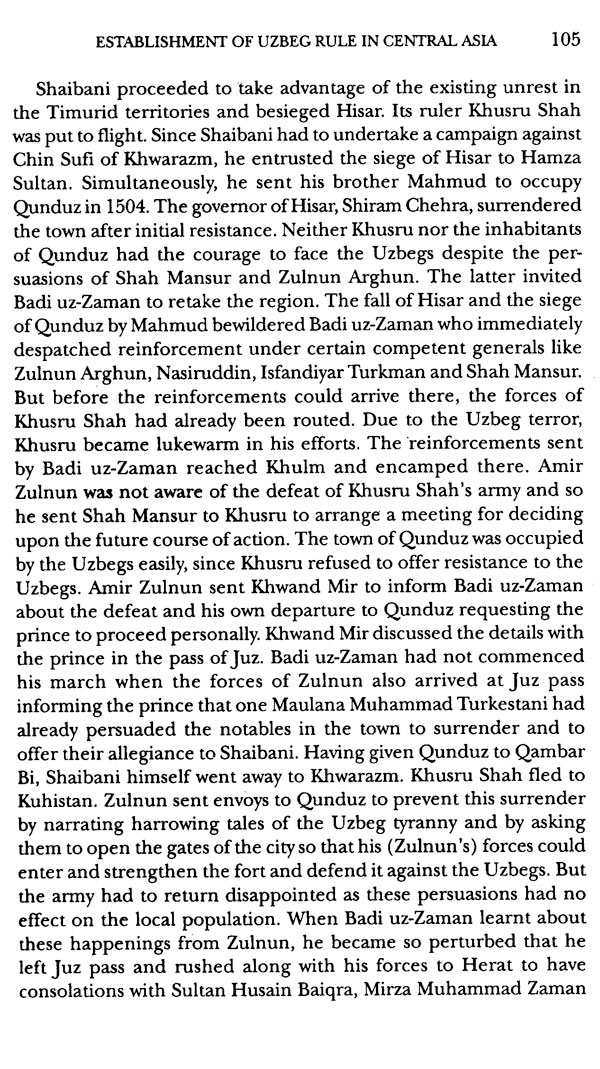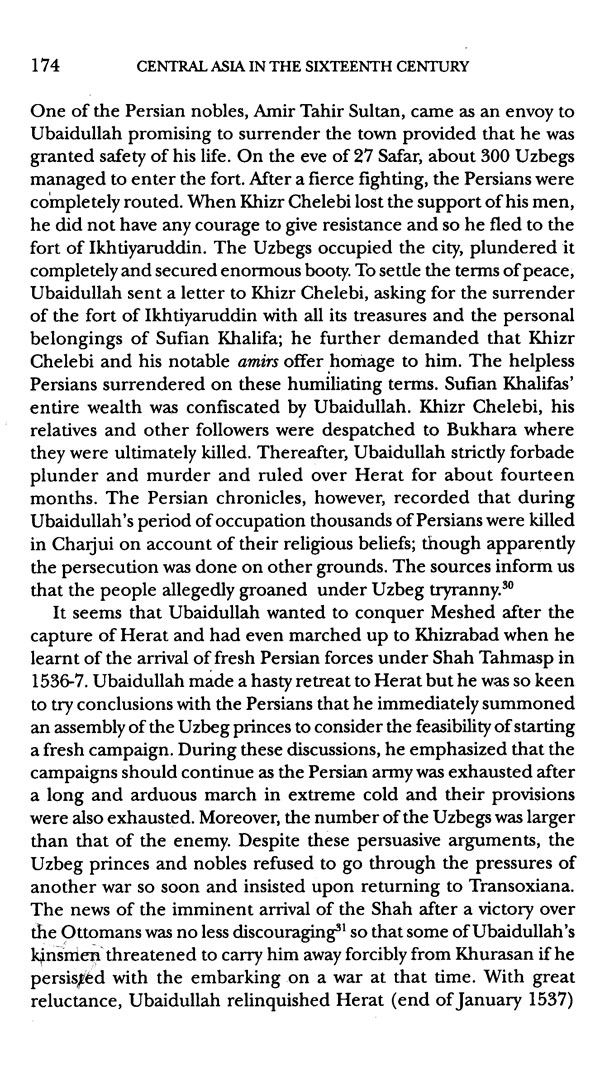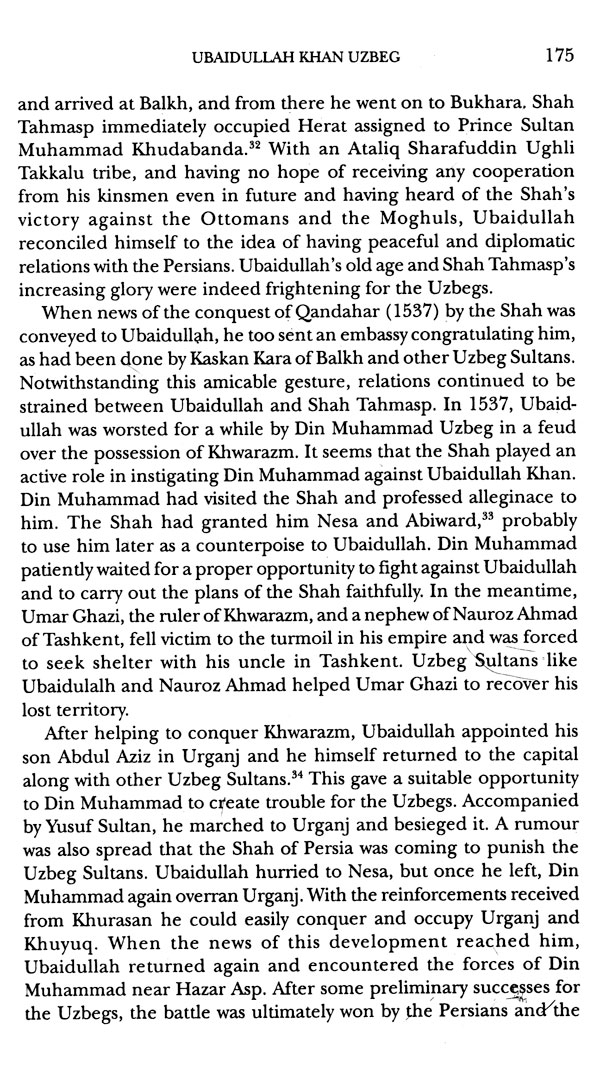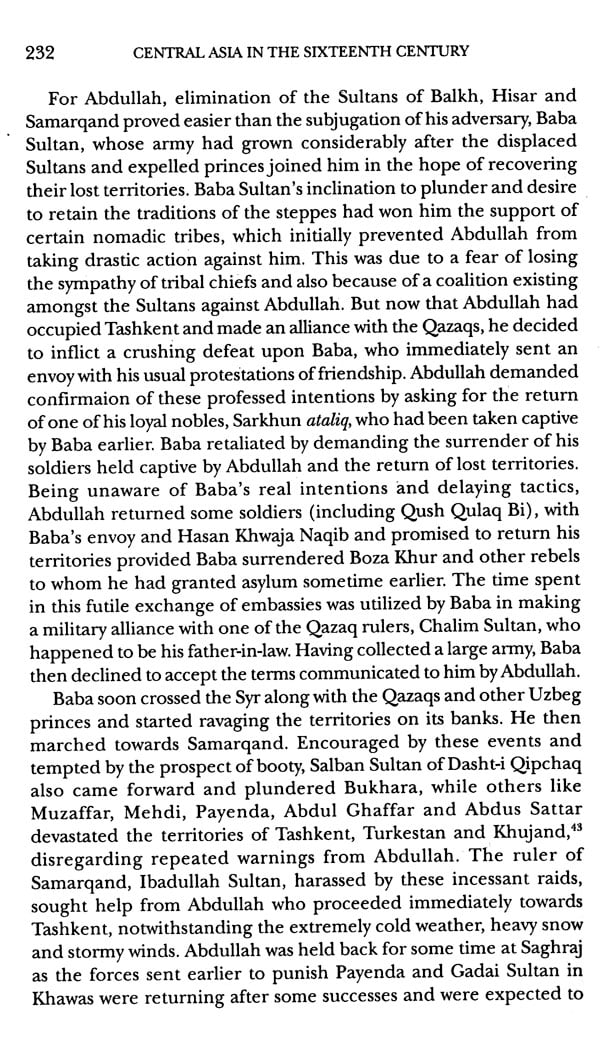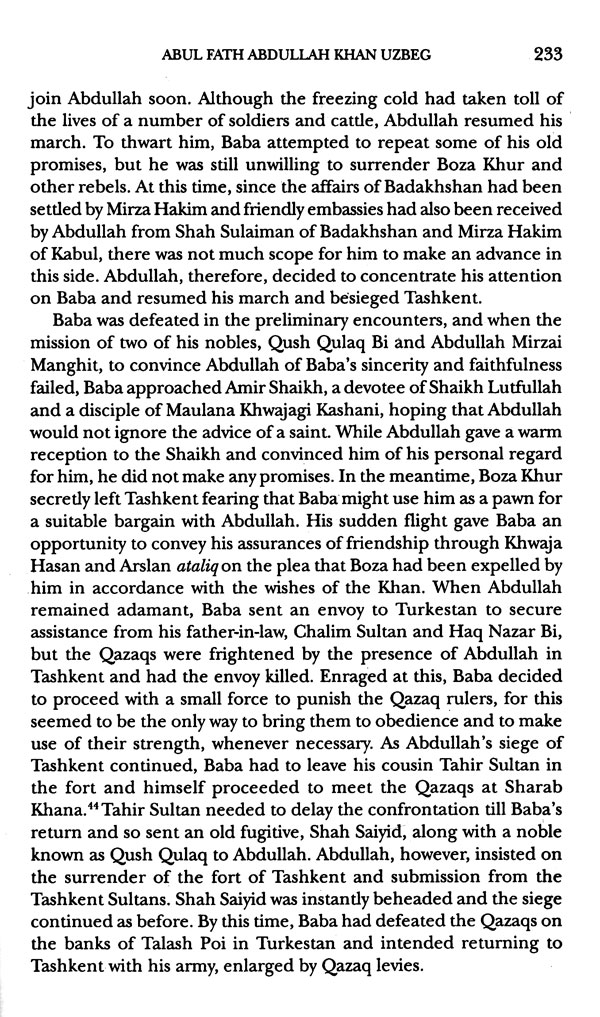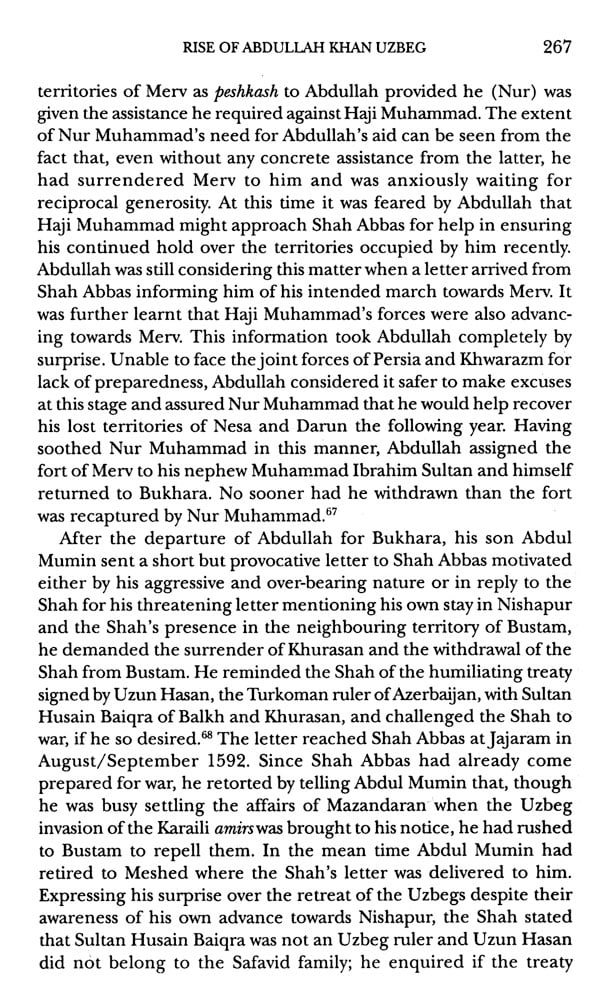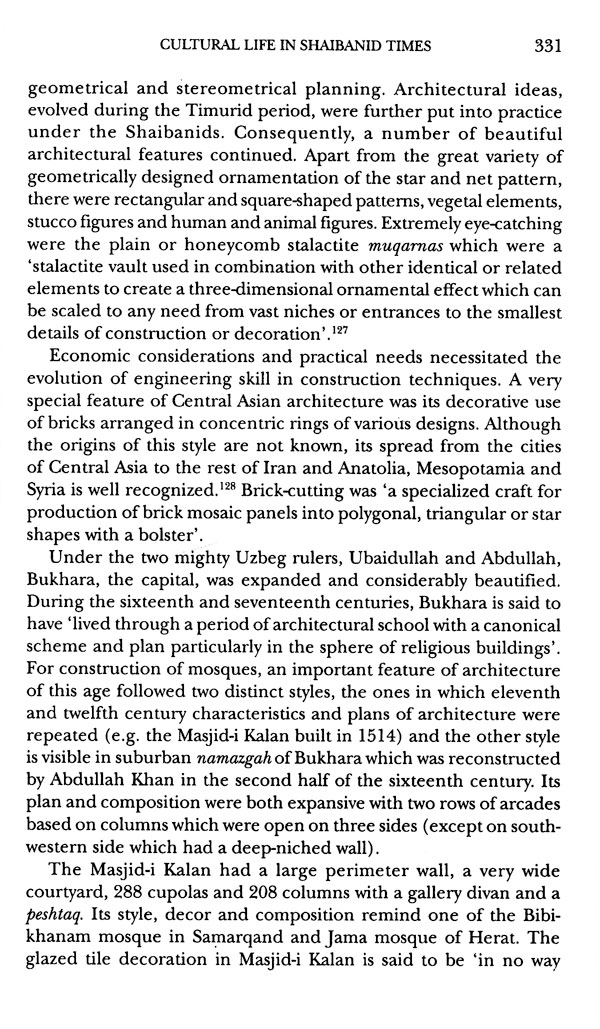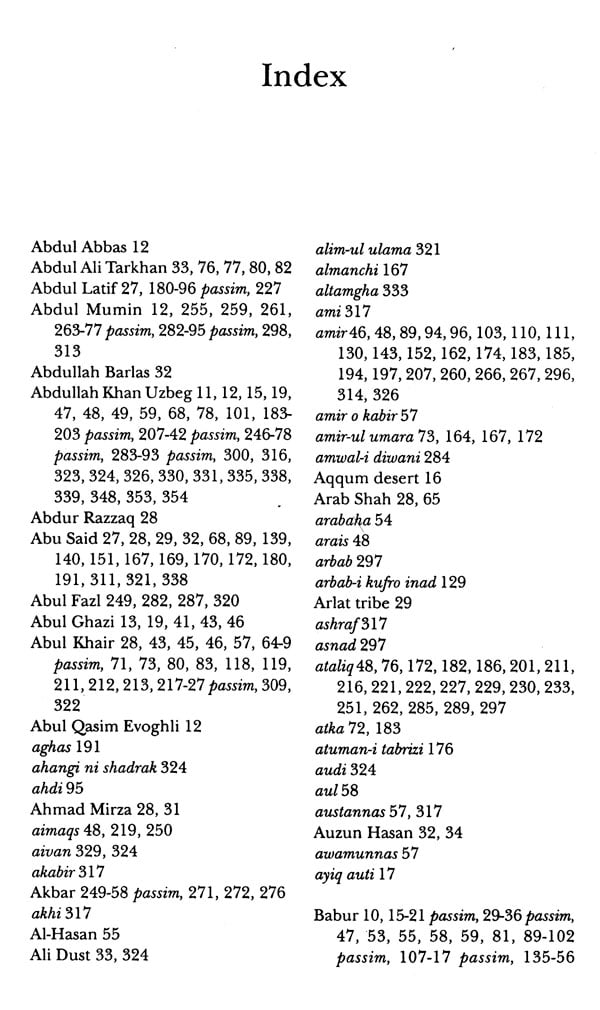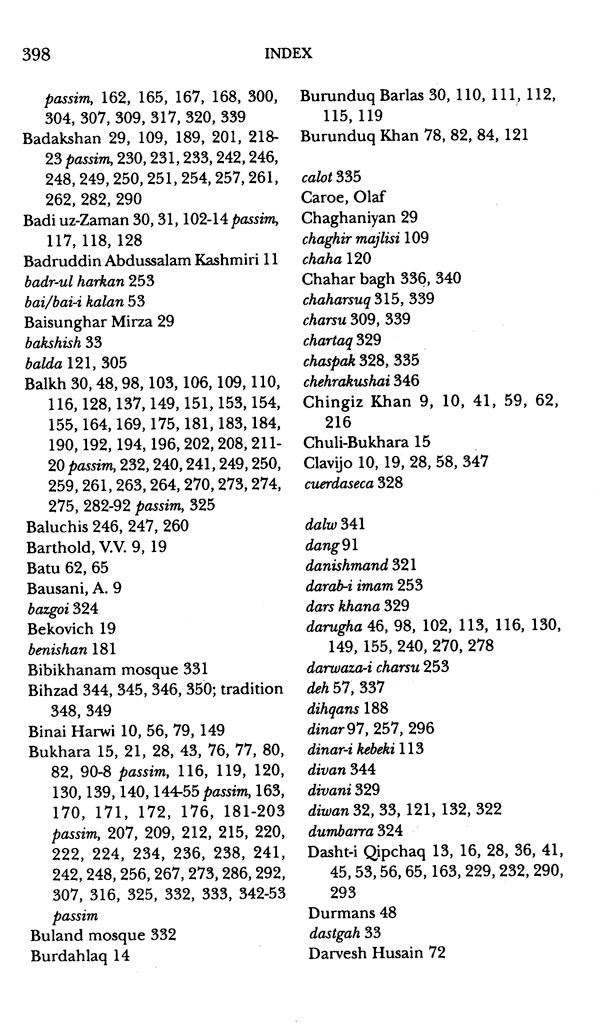
Central Asia in The Sixteenth Century
Book Specification
| Item Code: | NAZ770 |
| Author: | Mansura Haidar |
| Publisher: | Manohar Publishers and Distributors |
| Language: | English |
| Edition: | 2002 |
| ISBN: | 9788173044625 |
| Pages: | 420 (3 B/W Maps) |
| Cover: | HARDCOVER |
| Other Details | 9.00 X 6.00 inch |
| Weight | 660 gm |
Book Description
The book relates to the Uzbegs and provides an account of their origin, antecedents, early exploits, conquests and finally the occupation of Central Asia in the sixteenth century. Since three kingdoms namely the Mughals of India, the Safavids of Persia and the Uzbegs of Turan had been established simultaneously, their mutual relations are a natural part of the study in this book. The tripartite relations among these powers indicate how the medieval diplomacy rehearsed what was to follow in the shape of a Big Game in the later centuries.
Due to the lack of adequate material on the Uzbeg history and its culture, even their cultural heritage and contribution to the fine arts had been passed off as being a Persian legacy.
The present work, presents this warrior group with all their mundane aspirations and medieval imperialist achievements along with a depiction of their keen interest in the sphere of culture. The ruling dynasty of the Uzbegs produced men of talent who possessed command over the sword and the pen alike. Even well-known warriors from amongst them had excelled in mastering and patronizing various fine arts. The florescence of art, learning and culture as ensured by the Uzbegs in the best traditions of Central Asia has also been described in this work alongside their battles and annexations.
It is the first work on the history and culture of the Uzbegs in English language published in this country. It is primarily based on original, contemporary and later sources though most of the available modern works in Persian, English, Russian, Uzbeg and French have also been drawn upon.
Mansura Haidar is presently the Chairperson and Coordinator of the Centre of Advanced Study in History, and is also the Dean, Faculty of Social Sciences, Aligarh Muslim University.
With a brilliant academic records she has dedicated a major part of her life tc the study of history and culture of medieval Central Asia and the Mughal India.
Prof. Haidar has written many books and contributed a large number of articles to various academic journals ar books. She is proficient in several foreign languages such as Russian, French, Uzbeg and Persian.
The study of sixteenth century Central Asia is important not only for an appraisal of the history of the region, which includes India but also in respect of the Oriental Studies as a discipline. During this period, three powerful ruling dynasties, namely, the Safavids of Persia (1502), the Uzbegs of Turan (1605-6), and the Mughals of India (1526) had arisen from the ashes of old perishing dynasties. Each of these new dynasties had left an indelible mark on the pages of history not just by way of introducing revolutionary changes in the socio-cultural and religio-political spheres but also in the fields of economy and technology leading to a brisk exchange of ideas, men and commodities and continuous trickling in of fortune seekers from one state to another which seemed to remove the barriers between the various neighbouring kingdoms of the region. Another significant feature was the emergence of a new power structure whose balance could only be maintained through continuous warfare. The above mentioned states were often being controlled by certain flourishing powers of the region, namely, the Ottoman Turks, Russians and the Portuguese who used the newly emerging states as a countervail to each other merely to maintain their own supremacy and to win over half-hearted or active allies within the regional factions so as to use them for their own benefit. The medieval states indulged in their desired pastime of campaigns and wars in general. In the sixteenth century particularly, there were definite reasons for these continuous mutual confrontations. Rehearsal for the Big Game was on during the sixteenth century though only the actors were different. The Mughals wished for the 'twin gates' of India, namely, Kabul and Qandahar and were watchfully defending their interests in the splendid isolation of non-alignment. The Portuguese and the Ottomans were rivals and were keen to take hold of all the maritime trade routes and to capture Hormuz, Indian Ocean and the flourishing Red Sea trade. While the Ottomans, thus raided Persia, the Portuguese offered the latter moral support. The Russians whose cupidity was excited by the Central Asian resources, wanted to use the Uzbegs as their satellite. The Uzbegs who had migrated from a semi-desert region of Dasht-i Qipchaq in search of greener pastures had only recently carved out an empire from the Timurid State, which happened to be on the brink of ruin. The Uzbegs had their own reasons for continuous conflict. Their keen desire for an expansion of their kingdom was being thwarted by the prevailing geopolitical situation. Vast unfriendly deserts, seas and mountains safeguarded the neighbouring territories on every side surrounding Central Asia. The Uzbegs could, therefore, extend their sway only at the expense of Persia. Wars in the region were consequently a common feature and transient frontiers a regular phenomenon. Campaigns were as frequent with external powers as with internal rivals in internecine warfare so that even an Ottoman envoy like. Sidi Ali Reis had to be warned and whisked away lest he be caught in the whirlpool of local disturbances. He had brought with him warriors, arms and ammunitions to assist one of the Uzbeg kings, Nauroz Ahmad, against his own kith and kin. To the imperialist ambitions were added other factors for consistent warfare. The pastoral economy and untapped natural resources further made `booty' the main source of the surplus revenue and thus wars were developed as an art. Under such inflammable circumstances, different atoms flew together to cause the continuous explosions of external or internal invasions or campaigns. No history of medieval times can, normally, be pieced together except through a description of incessant or occasional mutual warfare, and Central Asia was no exception particularly due to its geographical condition which made it more prone to warfare.
Book’s Content and Sample Pages